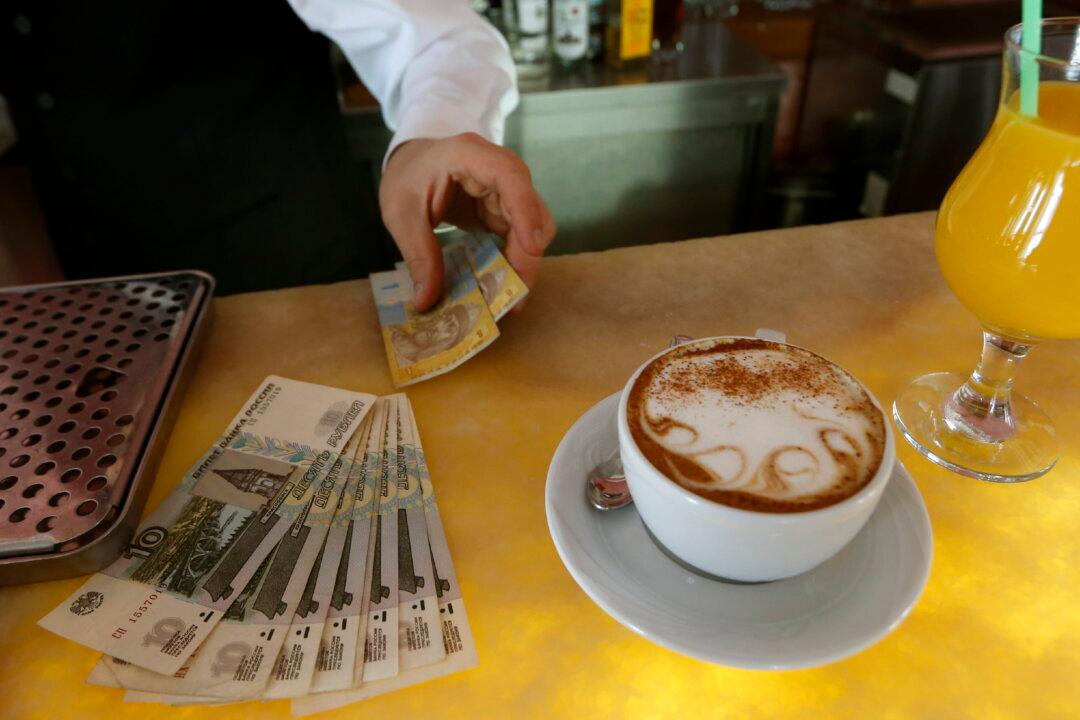NEW YORK—Coffee traders are seeking advance payment in any new deal to sell beans to Russia as Western sanctions hit the financial system of the world’s sixth largest importer.
Traders in Brazil, the world’s largest exporter and number 1 supplier to Russia, said they have added the country to a list of risky and sanctioned destinations that require pre-payment, including Syria, Lebanon, and Iran.





